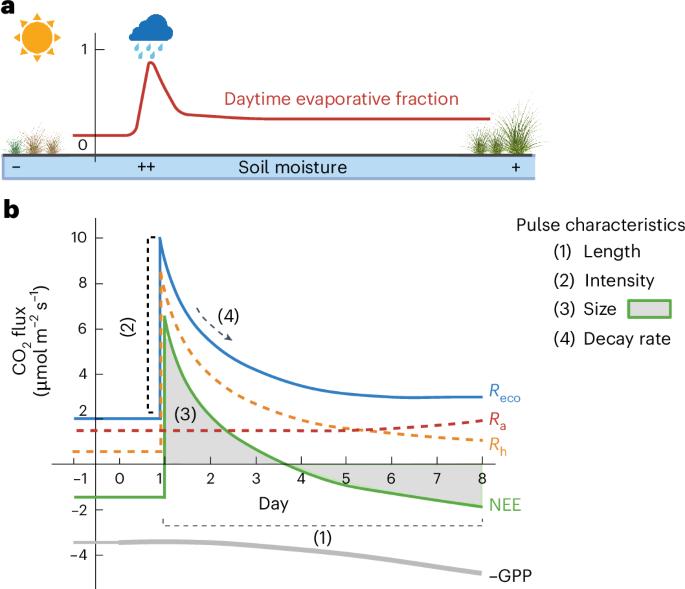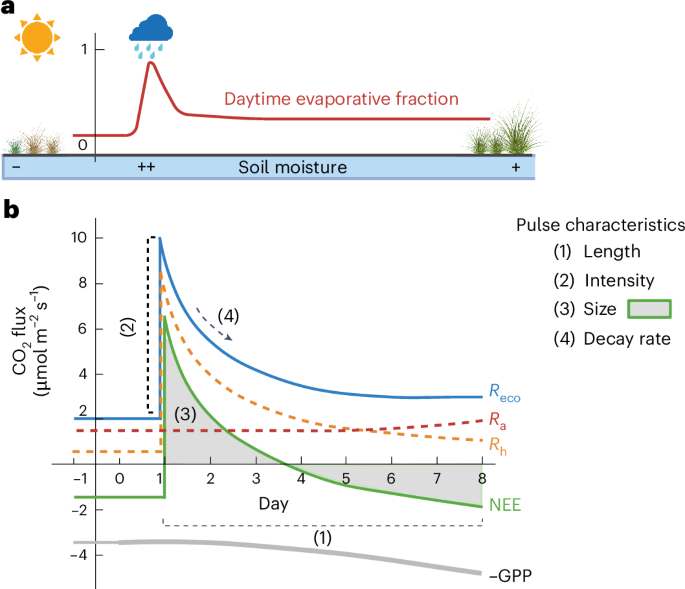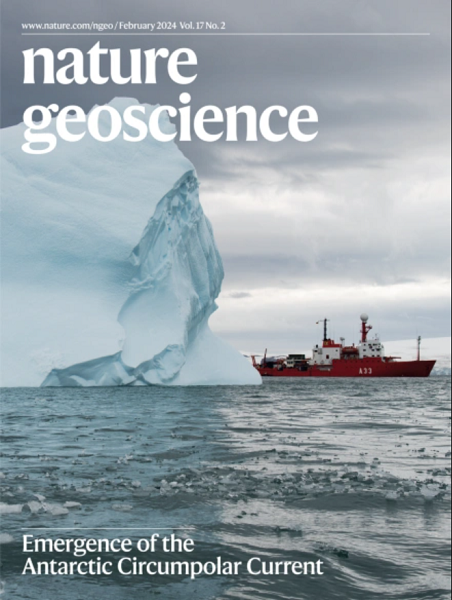全球旱地雨水引起的土壤碳排放普遍低估
IF 16.1
1区 地球科学
Q1 GEOSCIENCES, MULTIDISCIPLINARY
引用次数: 0
摘要
旱地碳通量,特别是由生态系统呼吸作用驱动的碳通量,对水分供应和降雨脉冲高度敏感。然而,全球降雨引起的碳排放规模仍不清楚。在此,我们量化了雨脉冲事件对全球旱地碳平衡的影响,并表征了其时空控制。利用对全球34个旱地站点的碳、水和能量通量的涡旋协方差观测,我们编制了一份超过1800个人工确定的降雨引起的二氧化碳脉冲事件的清单。基于此清单,开发了一种机器学习算法来自动检测降雨引起的二氧化碳脉冲事件。研究结果表明,在雨脉冲事件期间,现有的划分方法低估了生态系统呼吸和光合作用的30%,而雨脉冲事件每年贡献了16.9±2.8%的生态系统呼吸和9.6±2.2%的净生态系统生产力。我们发现,碳损失强度与年生产力、干旱和土壤ph的相关性最强。最后,我们确定了降雨引起的二氧化碳脉冲的普遍衰减率,并用它来校正呼吸估计的偏差。我们的研究强调了降雨引起的碳排放对全球旱地碳平衡的重要性,并表明生态系统模型可能在很大程度上低估了雨脉冲对旱地碳循环的影响。本文章由计算机程序翻译,如有差异,请以英文原文为准。


Widespread underestimation of rain-induced soil carbon emissions from global drylands
Dryland carbon fluxes, particularly those driven by ecosystem respiration, are highly sensitive to water availability and rain pulses. However, the magnitude of rain-induced carbon emissions remains unclear globally. Here we quantify the impact of rain-pulse events on the carbon balance of global drylands and characterize their spatiotemporal controls. Using eddy-covariance observations of carbon, water and energy fluxes from 34 dryland sites worldwide, we produce an inventory of over 1,800 manually identified rain-induced CO2 pulse events. Based on this inventory, a machine learning algorithm is developed to automatically detect rain-induced CO2 pulse events. Our findings show that existing partitioning methods underestimate ecosystem respiration and photosynthesis by up to 30% during rain-pulse events, which annually contribute 16.9 ± 2.8% of ecosystem respiration and 9.6 ± 2.2% of net ecosystem productivity. We show that the carbon loss intensity correlates most strongly with annual productivity, aridity and soil pH. Finally, we identify a universal decay rate of rain-induced CO2 pulses and use it to bias-correct respiration estimates. Our research highlights the importance of rain-induced carbon emissions for the carbon balance of global drylands and suggests that ecosystem models may largely underrepresent the influence of rain pulses on the carbon cycle of drylands. Eddy-covariance observations suggest that rain pulses over global drylands drive substantial soil carbon emissions, which are underestimated in current measurement and modelling approaches.
求助全文
通过发布文献求助,成功后即可免费获取论文全文。
去求助
来源期刊

Nature Geoscience
地学-地球科学综合
CiteScore
26.70
自引率
1.60%
发文量
187
审稿时长
3.3 months
期刊介绍:
Nature Geoscience is a monthly interdisciplinary journal that gathers top-tier research spanning Earth Sciences and related fields.
The journal covers all geoscience disciplines, including fieldwork, modeling, and theoretical studies.
Topics include atmospheric science, biogeochemistry, climate science, geobiology, geochemistry, geoinformatics, remote sensing, geology, geomagnetism, paleomagnetism, geomorphology, geophysics, glaciology, hydrology, limnology, mineralogy, oceanography, paleontology, paleoclimatology, paleoceanography, petrology, planetary science, seismology, space physics, tectonics, and volcanology.
Nature Geoscience upholds its commitment to publishing significant, high-quality Earth Sciences research through fair, rapid, and rigorous peer review, overseen by a team of full-time professional editors.
 求助内容:
求助内容: 应助结果提醒方式:
应助结果提醒方式:


